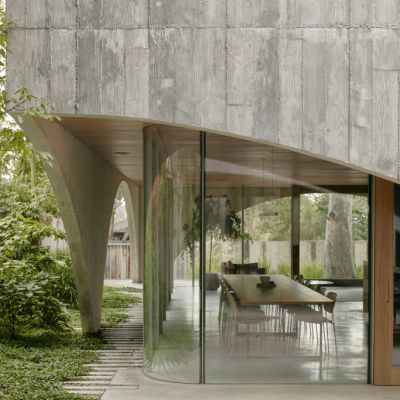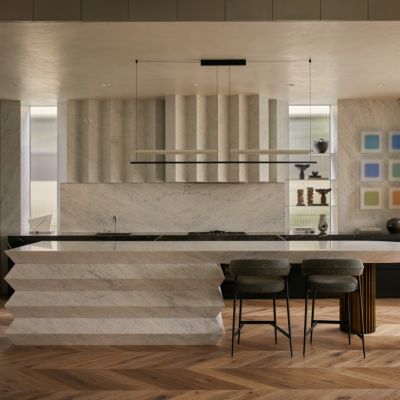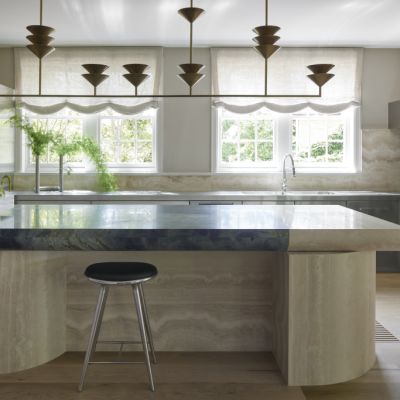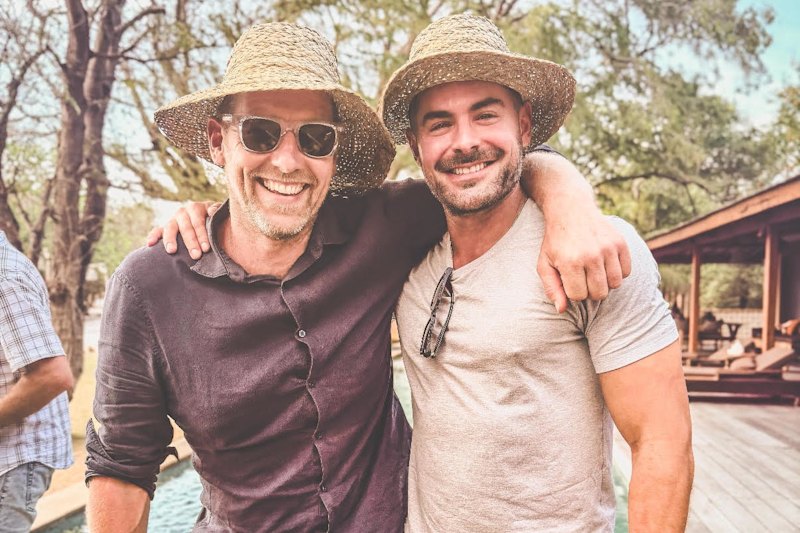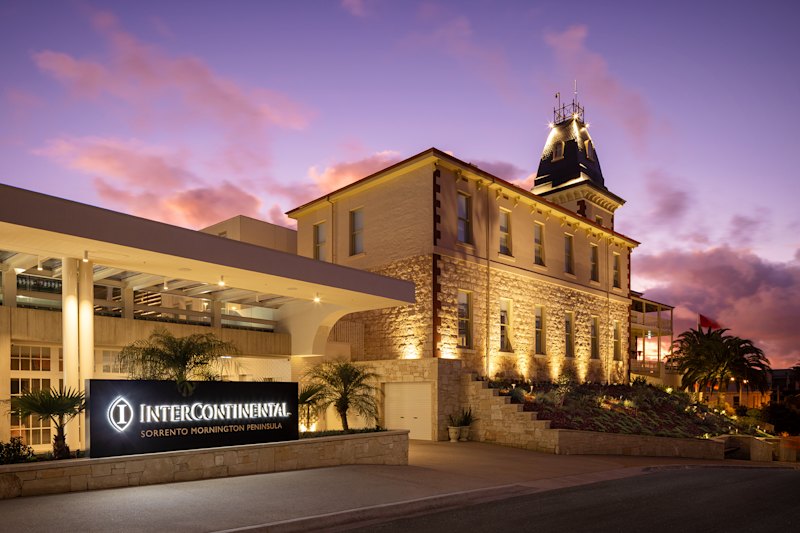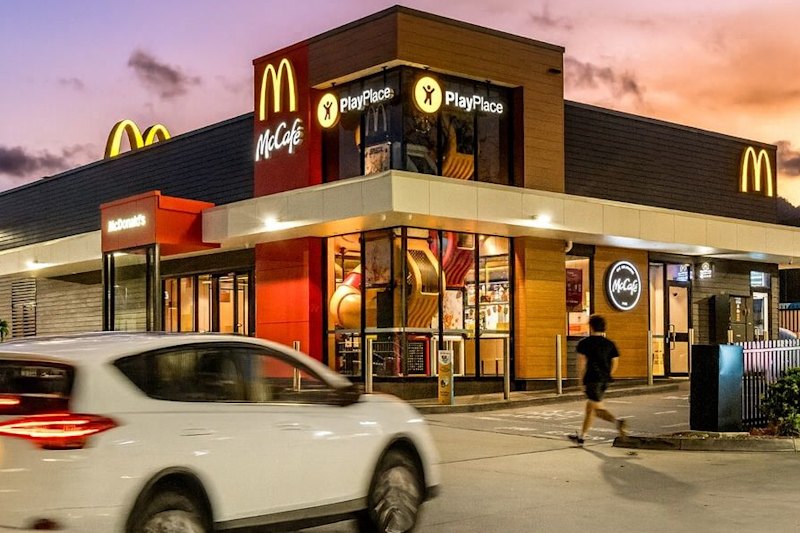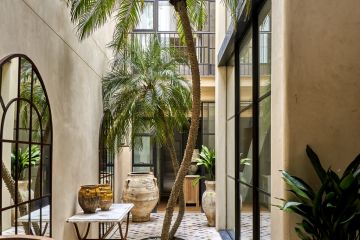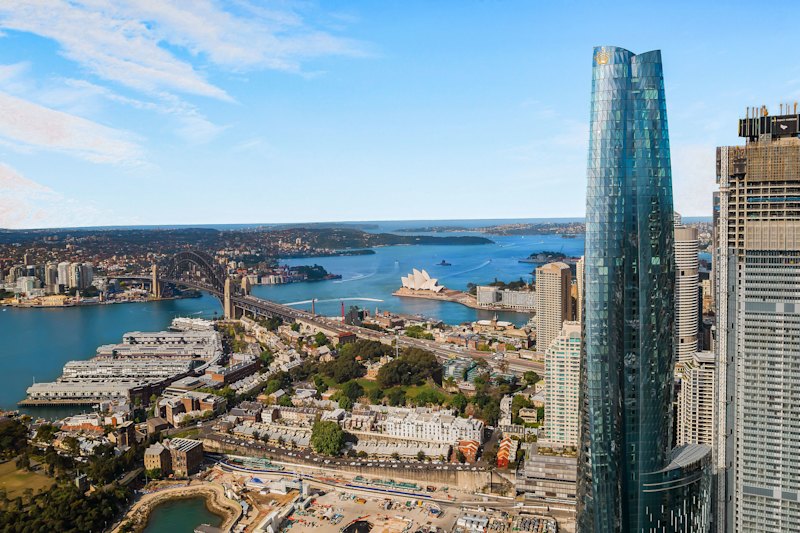Brass highlights are the latest textural trend in home design
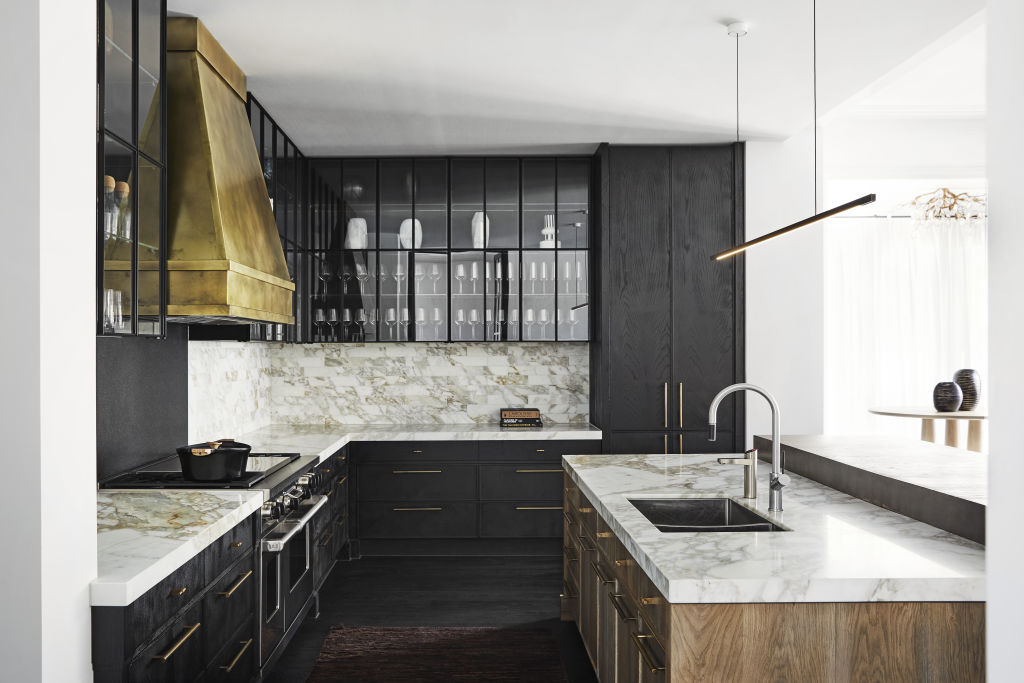
A versatile metal, brass can be polished and formal, aged and rustic, or a subtle accent. Used well, it adds depth and detail to interior spaces without demanding attention.
“It brings a kind of soul to a space,” says Jillian Dinkel, founder of the eponymous Sydney-based interior design studio. “It’s a living material. It ages, it reacts and that imperfection is part of the beauty.”
In an opulent Point Piper apartment designed by Dinkel, titled Kilmory House, a statement powder room vanity encased in hand-aged brass takes centrestage. The material, left unlacquered, patinas naturally over time, especially in wet zones or areas that are frequently touched, like handles and taps. “You have to embrace that process,” Dinkel says. “It’s going to change and that’s the point. We always aim to make it feel timeless, not trendy.”
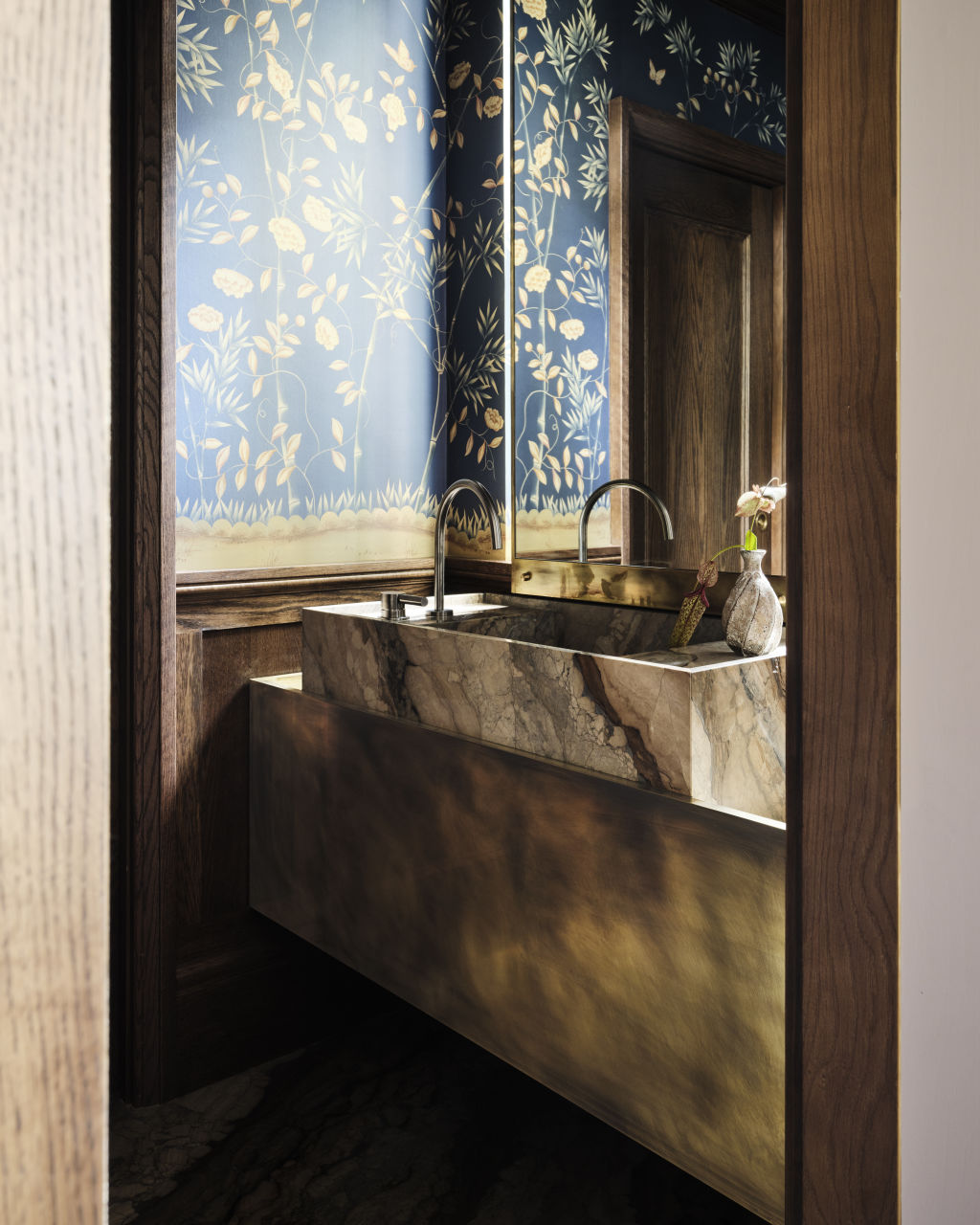
Still, balance matters. Dinkel prefers to mix metals to avoid locking a space into a single moment in time. “In that bathroom, the tapware is a cooler and darker iron bronze which contrasts beautifully with the warmth of the vanity. Mixing metals gives a room texture.”
Melbourne architect Travis Walton incorporates aged brass throughout his Norfolk Residence project, a moody beach house on Victoria’s Mornington Peninsula. You’ll find brass in a full-height kitchen wall and finer details like joinery hardware. “The entire back wall of the kitchen is clad in aged, beeswax-sealed brass that develops character as it wears,” Walton says. “Fingerprints, oils and patina all add to the story.”
He’s adamant about letting the material speak for itself. “We always recommend using it in its rawest form,” he says. “Once you powder coat or seal it with a lacquer, it starts to look plastic. You lose that depth.”
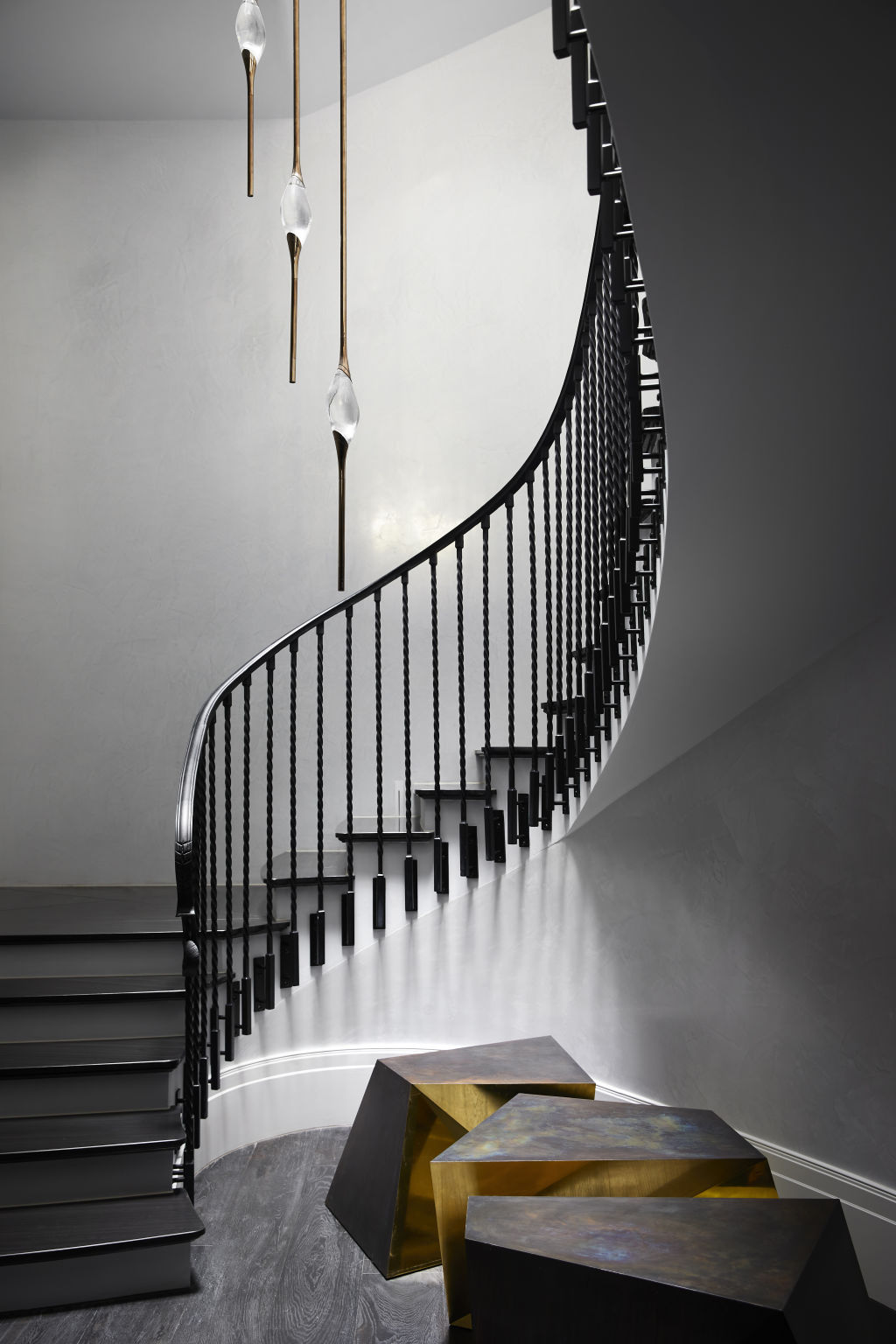
The right pairing is key. Walton often sets brass against cooler or more robust materials like concrete, aged stone and mild steel. He also plays with gradient finishes. “We’ve done ombre effects from dark bronze to live brass,” he explains. “There’s so much control in the metal and that versatility is part of what makes it so compelling.”
Sydney-based interior and furniture designer Dylan Farrell takes a bolder approach. Known for his strong, expressive aesthetic, Farrell uses brass throughout Alchemy House, a Melbourne project layered with charred timber, fumed oak and custom sculptural elements.
“We used brass like jewellery for little moments of drama across an otherwise quiet palette,” he says. Think a polished brass rangehood in the kitchen, a vintage-inspired chandelier and acid-treated furniture pieces that shimmer with iridescent hues. Even the smallest applications, like door handles and table legs, were designed to catch the eye without dominating the space.
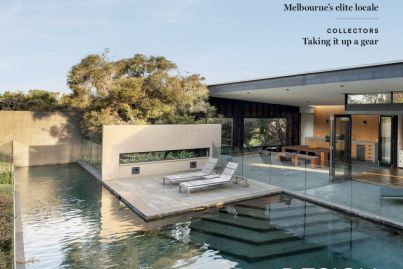

Still, Farrell is cautious about overdoing it. “Brass can turn tacky fast if it’s not balanced,” he says. “It should feel like a metal, not a colour. It’s about restraint, using strong materials like brass only where they count and letting everything else quieten down around them.”
And while the material might be having a moment now, all three designers agree that it’s best used with a long-term lens. “Good taste and honesty in material choice will always outlast a trend,” Farrell says.
We recommend
States
Capital Cities
Capital Cities - Rentals
Popular Areas
Allhomes
More
- © 2025, CoStar Group Inc.
